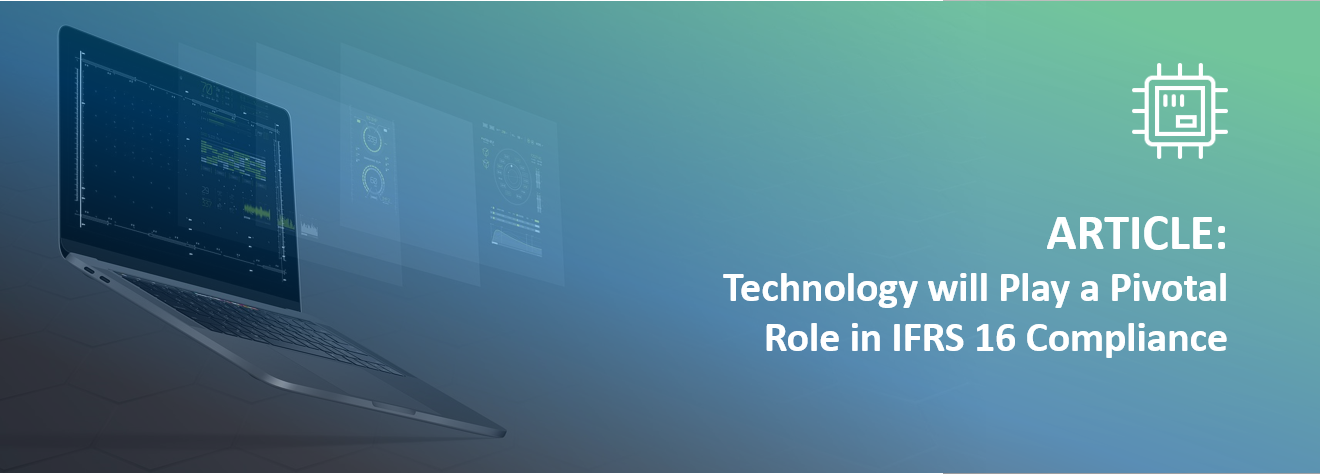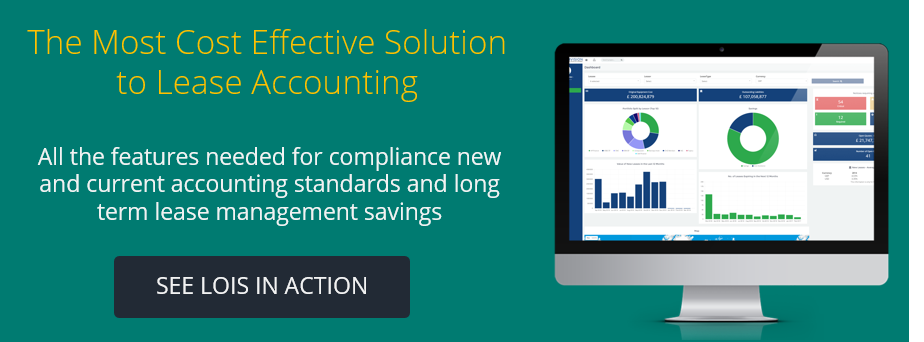Technology will Play a Pivotal Role in IFRS 16 Compliance
Updated 26th May 2021 | 7 min read Published 14th July 2016

The announcement of the new standards has left many organisations scrambling to get to terms with the new accounting principles, revealing a problematic lack of adequate technology to help with this transition.
IFRS 16 and FASB ASU 842 have prompted companies to forecast the impact the changes will have on their organisations, forcing them to evaluate what is required of them to meet transition and compliance requirements. Without updated technology or software, this processes will be even more complex.
The new accounting standard IFRS 16: Leases was issued by the IASB in January 2016. The new standard replaces IAS 17, which is no longer deemed suitable after remaining unchanged for over 30 years since it was first introduced and does not “truly reflect economic reality”. Companies will need to implement IFRS 16 for reporting periods beginning on or after 1 January 2019.
Far Reaching Implications
The implications associated with IFRS 16 will be broad and significant. According to the International Accounting Standards Board (IASB), it is estimated that listed companies worldwide currently have approximately $2.8 trillion worth of lease commitments that are treated ‘off-balance sheet’ under existing standard IAS 17. Under IFRS 16 Leases, these off-balance sheet commitments will have to be capitalised, recognising all assets and liabilities arising from leases on balance sheet.
This shift in the way operating leases are accounted for will fundamentally change the balance sheet and income statement for many companies.
What’s more, outside of the accounting changes, the ramifications of the new standards will also be far reaching from an operational perspective. The data requirement for compliance will be extensive and challenging; the increased strain on system requirement will be significant. Meeting the transition and compliance requirements will also place an additional pressure upon internal resources and processes.
Businesses with considerable lease portfolios, with lease data dispersed both geographically and departmentally, will find the adoption of the new standard complex and challenging. One of the key considerations will be whether the lease management system currently in place is robust enough to cope with the transition process.
To meet the compliance obligations, companies will have to:
- Improve the quality of the data existing within their lease portfolios
- Implement new structures, procedures and lease protocol.
- Deploy system reforms and control measures
- Educate key departments, employees and stakeholders.
- Revise their existing lease agreements for suitability under the new standards
To achieve these fundamental changes, companies should look to how technology and lease accounting software in particular can help ease the burden of compliance.
An Action Plan for Compliance
The initial stages for an IFRS 16 implementation plan are relatively straightforward, but will ultimately determine the success of the transition:
- The first phase is to form or designate a dedicated transition team – this team will become the “architects of compliance”.
- The second phase it to set out success objectives and control measures. A project of this scope should always be clearly defined to ensure a seamless transition.
Once the project scope and measures are in place, business will need a centralised database for all their leases from which they can delegate, track and deploy the required actions. Most businesses do not currently have a standardised system in place for managing their active leases agreements, which means collecting the lease data required for accurate reports is a convoluted and time-consuming process. This is especially problematic for large businesses, where information is disjointed and spread across departments, sites and geographies.
Adopting a holistic approach during the data gathering phase of the project will prove critical. Businesses must act early if they wish to complete this element of implementation, whilst leaving adequate time to analyse and validate the data required for meeting the transition deadline. Realistically this is a process that should start in 2016 or early 2017 at the latest.
"There is sufficient time, but companies should not underestimate the amount of effort needed to complete these activities,”
“Time is moving quickly, so it is prudent to get started."
Sean Torr, Deloitte Advisory
The data gathering and analysis phase of the transition to IFRS 16 is arguably the most challenging aspect and one that will ultimately prove to be a resource intensive exercise. This is where technology will play a pivotal role in easing the burden of compliance for many companies.
Technology is Key
The data requirement for compliance will be excessive. Gathering, collating and analysing data sets of such volume manually would be a foolish and costly undertaking; as would relying on outdated paper based or spreadsheet methods for managing the transition.
Many lessees today use spreadsheets (68% according to PwC research) to manage their lease portfolios and account for their leases. With the complexity of the new leases standard; using spreadsheets for this process may not be cost-effective and is increasingly prone to inconsistencies and errors within large data sets, which ultimately results in inaccurate validation of the critical lease data needed for financial compliance. Producing the retrospective reports necessary for compliance will also be a complex and difficult task if undertaken using spreadsheets, as traditional programs such as Excel do not have the built-in accounting functionality. Companies have to develop their own workarounds and compromises in order to produce the required reports – these are again at risk of inconsistency and errors.
In order to produce the required reports and identify how their asset financing will be affected, businesses will need to begin the process of gathering their lease data for all active leases.
"Many companies have disparate systems for tracking, monitoring, and housing lease agreements."
Sheri Wyatt, PwC
The answer to this problem is for lessees to implement lease management and accounting software capable of acting as a centralised data repository and single entry point for data collation, tracking and validation of accurate lease data across an entire lease portfolio. The best solutions of this nature should also incorporate integrated functionality capable of generating the relevant accounting calculations required for IFRS 16 compliance and support the total management of a lease, throughout its entire lease life-cycle. Such functionality will enable businesses to optimise their portfolio effectively and stay ahead of any lease obligation.
"Following the release of both new lease accounting standards, it’s clear that creating a centralized, electronic repository of all equipment and real estate leases held should be a priority for companies with leased assets."
Sean Torr, Advisory Managing Director and Lease Accounting Services Leader at Deloitte & Touche LLP
With the need for retrospective comparative reports as a requisite of compliance, it’s important that any software solution incorporates the appropriate functionality to produce these reports. Such reports are critical for the planning and evaluation stage of the project and form the basis of any impact assessment for the standard. This analysis is a valuable resource for educating departments, employees, key stakeholder and investors as to the impact of the new standard.
Lease Optimisation and Information Software – LOIS
Specialised lease accounting and management software, such as Innervision’s own system LOIS, can be the difference between a seamless, successful transition and a complex, challenging one.
LOIS is the perfect solution for IFRS 16 as it incorporates all the tools, features and functionality needed to facilitate full compliance.
LOIS will provide companies with:
- A central hub for storing critical lease data and information
- Accurate and effective lease validation and analysis
- A filtration system for finding information on specific leases required for reports
- Data processing, reporting and visualisation features that help you translate and utilise the information
- Advanced IFRS and FASB lease accounting reporting functionality
- IFRS reports that automatically calculate the complex accounting calculations at the touch of a button
- Outputs that interface with all major EPR systems (including SAP, Oracle and other General Ledger applications)
- Scalable and practical lease management functionality for long term optimisation
- Dashboards that provide a top-level overview of the health of your entire lease portfolio
- An advanced suite of reports that allows you to identify further savings by identifying unnecessary expenditure overspends and extended leases
- Before and after impact assessment of how your financial metrics will change after IFRS 16
Innervision and LOIS will provide you with the keys to unlocking valuable, actionable insights from within your lease portfolio and gives you all the tools to ease the burden of compliance.
See LOIS for yourself by arranging a demo with one of our leasing experts. Find out how LOIS can help simplify your transition to new lease accounting standards, allowing you to achieve compliance alongside lease management savings.


